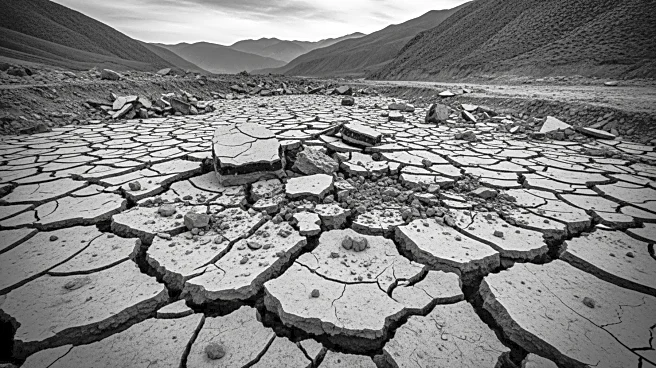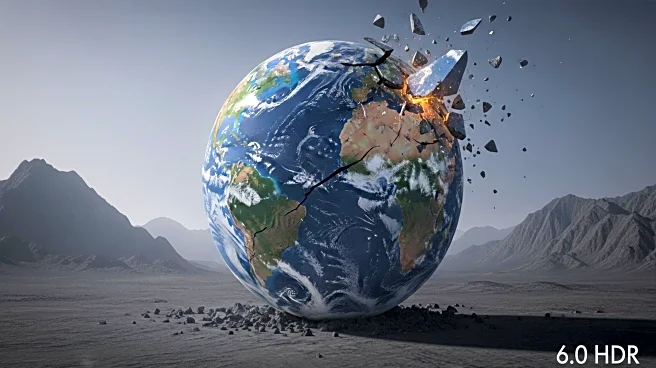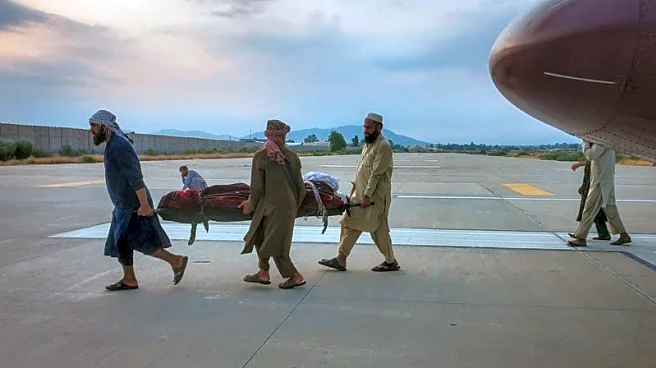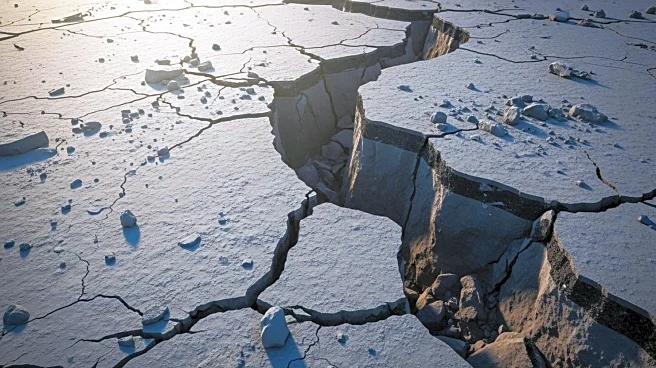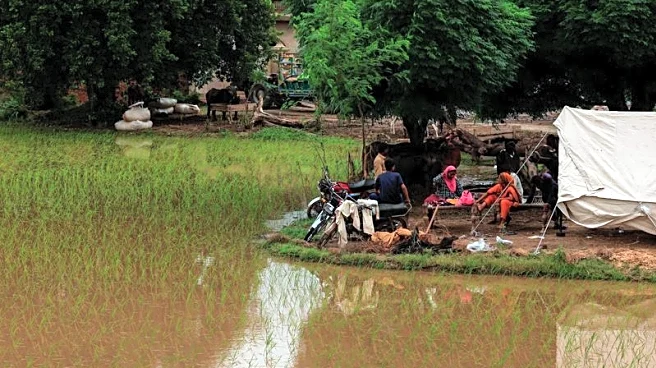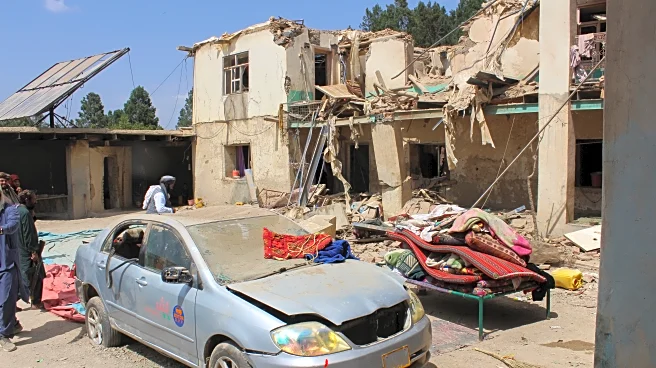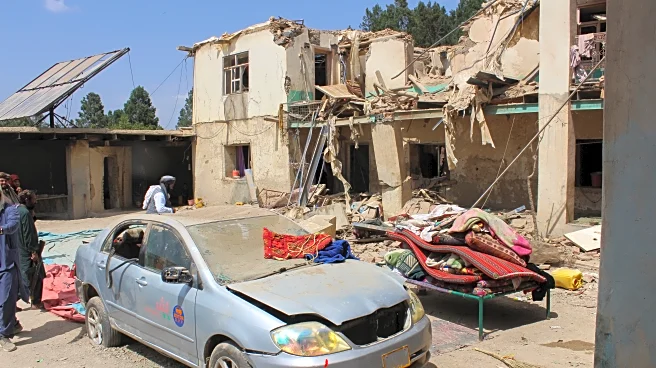What is the story about?
What's Happening?
A powerful earthquake with a magnitude of 6.0 struck eastern Afghanistan near the Pakistan border late Sunday, causing significant destruction and loss of life. The epicenter was located 17 miles east-northeast of Jalalabad, and the quake occurred at a shallow depth of 5 miles, which contributed to the extensive damage. The earthquake resulted in the destruction of numerous villages, killing at least 250 people and injuring 500 others, according to local officials. The affected areas include several towns in Kunar province and near Jalalabad in Nangahar province. Rescue operations are ongoing, with medical teams arriving from Kunar, Nangarhar, and Kabul to assist in the relief efforts.
Why It's Important?
The earthquake highlights the vulnerability of Afghanistan to natural disasters, particularly due to its location near tectonic plate junctions. The shallow depth of the quake exacerbated the damage, affecting poorly constructed buildings and infrastructure. The disaster poses significant challenges for the Taliban-led government, which is already dealing with political and economic instability. The humanitarian impact is severe, with many areas still unreachable, complicating rescue and relief operations. The event underscores the need for improved disaster preparedness and infrastructure resilience in Afghanistan, which could mitigate future casualties and damage.
What's Next?
Rescue and relief efforts are expected to continue as authorities work to reach remote areas and provide aid to affected communities. The death toll and number of injuries may rise as more information becomes available. International aid organizations may become involved to support the local government in managing the crisis. The disaster could prompt discussions on improving building standards and disaster response strategies in Afghanistan to better prepare for future earthquakes.
AI Generated Content
Do you find this article useful?
